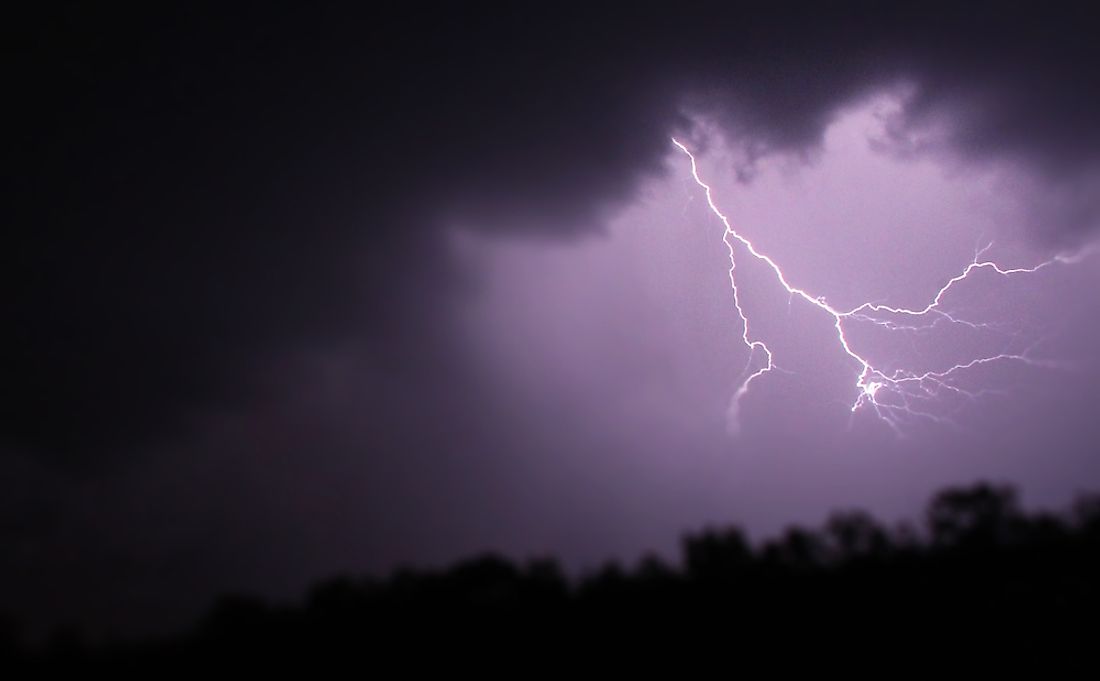What Causes Lightning?

Lightning is a natural rapid electrostatic discharge which takes place in a thunderstorm. The electrical discharge occurs either between two clouds, the ground and the cloud or electrically charged parts of a cloud. It creates a sound known as thunder and light from a very hot plasma formed by the flow of the electron. It can be seen and not heard if it occurs at a distance. The charged cloud equalizes itself temporarily through the discharge known as a flash. If it involves an item on the ground, then the lighting flash becomes a strike.
Formation of Lightning
Lightning is an electrical current which is created in the clouds. When the ground is warm, it heats up the air around it which rises. As the warm air rises, water vapor in the atmosphere cools to create a cloud. As the air continues raising the cloud grows bigger. The movement of air and the low temperature of between -15 to -25 degrees Celsius produce a mixture of graupel, icy crystals, and super-cooled cloud droplets. The updraft moves the ice crystals and the cloud droplets upwards while the graupel moves down. The rapid movement causes collisions, and when the graupel collides with the ice crystal, it becomes negatively charged while the ice becomes positively charged. The icy crystals carrying the positive charge moves to the top of the cloud while the graupel moves down making the lower part of the cloud negatively charged. When the negative and positive charges are large enough in the thundercloud, a giant spark occurs.
Types of Lightning
1) Intra-cloud (IC)
An IC is formed within the same thundercloud. Intra-cloud occurs between the upper cumulonimbus incus (Anvil Cloud) and the lower parts of the thunderstorm. It is visible at night from a distance, and an observer will only see the light, but not hear the thunder.
2) Cloud to Cloud (CC)
When lightning occurs between two thunder clouds without reaching the ground, it is known as cloud to cloud lightning or inter-cloud lightning. Inter-cloud lightning is also known as Anvil Crawler due to its the behavior of the charge forming within or beneath the anvil and migrating to the top cloud layer while generating multiple lightning strikes. It only becomes visible when the thunderstorm passes over the observer.
3) Cloud to Ground (CG)
Although most lightning occurs inside a thundercloud at times, it can happen between the ground and the cloud. Cloud to ground lightning can either be positive or negative, and the direction of the electric charge determines the type of CG lightning. Majority of CG are negatively charged meaning that a negative charge travels to the ground and an electron goes downwards along the lightning's path. Positive CG lightning happens when an electron travels up on the lightning channel while a positive charge moves to the ground. Positive CG makes up about 5% of the total lightning and is less common than the negative CG lightning strikes. The cloud to ground lightning poses a considerable threat to properties and lives since it terminates on the ground.











